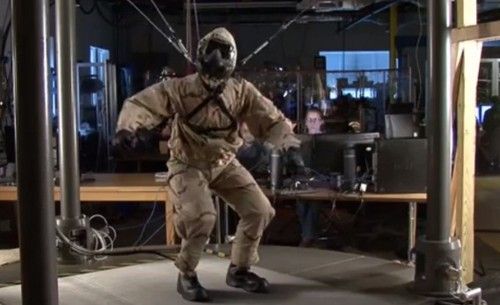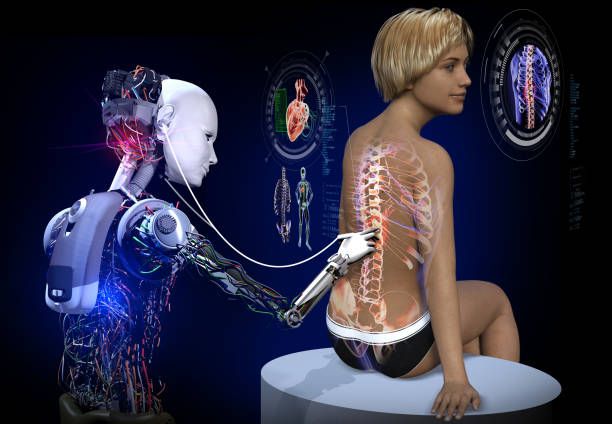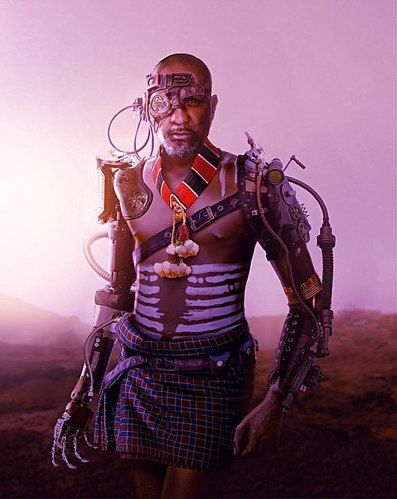ARE WE ROBOTS HUMANS OR CYBORGS

A cyborg is a portmanteau of cybernetic and organism—is a being with both organic and biomechatronic body parts. The term was coined in 1960 by Manfred Clynes and Nathan S. Kline.

What makes a person a Cyborg?
A person could be considered a cyborg when they are outfitted with implants such as artificial heart valves, cochlear implants or insulin pumps. A person could even be called a cyborg when they are using specific wearable technologies like Google Glass, or even using laptops or mobile devices to do work.

Human identity and the meaning attached to being human have been shaped throughout human history by the entrenchment of new technologies and the cultivation of new human-technological relationships in life and society. This is particularly salient within contemporary society where the rise of digital culture and human enhancement technologies allow for human-technological relationships that directly challenge traditional conceptions of human nature and what it means to be human.

New digital technologies and human enhancement technologies offer unique opportunities to improve the human condition by augmenting human abilities and practices in life and society. In response, a growing body of scholarly work focusing on the changing nature of human-technological relationships has nurtured in the emerging field of Technoself Studies (TSS).

A cyborg is a cybernetic organism (i.e. an organism that is a self-regulating integration of artificial and natural systems). The term was coined in 1960 when Manfred Clynes and Nathan Kline used it in an article about the advantages of self-regulating human-machine systems in outer space. D. S. Halacy's Cyborg: Evolution of the Superman in 1965 featured an introduction by Manfred Clynes, who wrote of a "new frontier" that was "not merely space, but more profoundly the relationship between 'inner space' to 'outer space' -a bridge...between mind and matter." The cyborg is often seen today merely as an organism that has enhanced abilities due to technology, but this perhaps oversimplifies the category of modern CYBORGS.

Just when you thought you were up to snuff on modern warfare we now have morphed from pure robots (mechanical only) to cyborgs which are (part human and part robotic.) I can see it all now as you approach the battlefield you yell out are you robotic or cyborg? Be careful of the answer since each with the help of advanced artificial intelligence may supply a deceptive answer to get an advantage on the battlefield.

We have come along way baby? Drop back fifty years if you were a paraplegic or could not walk because of amputees or spinal injury that was it. Since that time amputees can get prosthetic limbs and legs making it possible with no real legs to run in a special Olympics race. If that aint enough just recently folks who had major spinal injury and had no hope or opportunity to walk have taken their first steps with the help of complicated cyborg and robotic intervention. Medical journals and videos have shown people who were one hundred percent restricted to wheel chairs are now able to take steps with the help of robotics and specialized human trainers.

In the social imagination, cyborgs often invoke visions of super-humans entangled with cutting-edge technology capable of surpassing the limits of the human body. However, the focus on futuristic high-tech hybrids often overlooks the challenges and demands of disabled people. People who experience life as cyborgs cant thank modern medicine enough for the technological advances in robotics and cyborgs.

In the paper (‘Blending electronics with the human body: a pathway toward a cybernetic future’), its authors explain the various steps taken to try to bring about in the future scientific achievements that recall science fiction films, such as the creation of bioelectronic skin and tattoos that detect chronic diseases, or chips implanted in the brain capable of moving muscles in our body at will. Other ongoing pieces of research have to do with bionic eyes to restore vision, or implants that confer physiological properties that surpass our possibilities.
Some of these advances have already been turned into healthcare products used nowadays, while others paint a future scenario that is not so far away in which cyborgs will be improving our life quality. Researchers at the MIT (Massachusetts Institute of Technology) have, for example, managed to cultivate neurons in a lab that can then be used to control robots, or develop hybrid ear implants with properties similar to those of our ears.

“These advances will have the benefit of the boom in 3D bioprinting technology and, in the future, it will be possible to print hybrid structures that combine biology and electronics in a fast, accurate way,” explained Gorka Orive, who went on to say that “the advance towards the cyborg era is exciting, but is not without risks, difficulties or ethical arguments”.

THINGS YOU MAY NOT KNOW: In the future business of body parts you can walk in without a prescription and get any part you want. Body part installers will be on premises to assist with your purchases. Advertising might take the marketing approach: BUY ONE AUGMENTED BREAST GET ONE FREE
THINGS YOU MAY WANT TO SAVE: YOUR NEUONS It is a piece of cake with artificial intelligence to retrain your fried brain. Where do I sign up?

ZENTRAVELER SAYS: Nuclear War is not the worlds greatest threat? As technology advances at warp speed ARTIFICAL INTELLIGENCE IS THE WORLD'S GREATEST THREAT. The real future is artificial intelligence that is infinitely smarter than human beings which could be used in warfare in the hands of the unscrumptious to control human beings or in the ultimate warfare with a complete army of robots and cyborgs instructed to destroy nations or the entire world.

From here to Infinity is a relatively short ride! The next leg takes eons and eons as you fly through the Barycentric Dynamical Time Zone! …and on and on and on. Follow the Zentraveler Newsletter often for Travel, Health and Zen-like stories and such. Where else can you get a THREE IN ONE NEWSLETTER FOR THE PRICE OF FREE.

ZENTRAVELER IS A PERSONAL NEWSLETTER, DESIGNED TO GIVE TRAVEL, HEALTH, WRITING AND HUMOR INCLUDING HELPFUL HINTS WITH A ZEN LIKE QUALITY.
